Exhibition of the QZS-2
The second Quasi-Zenith Satellite (QZS-2) was exhibited to members of the press on April 5 at the Japan Aerospace Exploration Agency’s (JAXA) Tsukuba Space Center (Tsukuba City, Ibaraki).
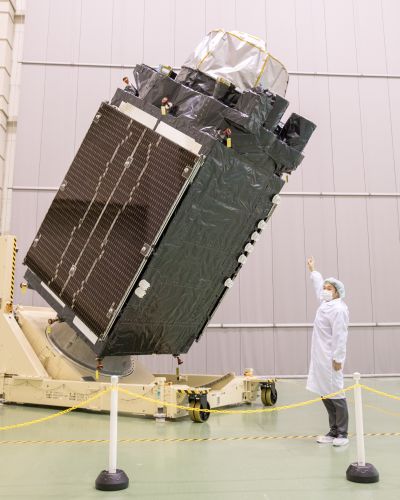
The second Quasi-Zenith Satellite (QZS-2) was exhibited to members of the press on April 5 at the Japan Aerospace Exploration Agency’s (JAXA) Tsukuba Space Center (Tsukuba City, Ibaraki).
Explanation of QZS-2

Mr. Moriyama of the Cabinet Office
At the press conference held on the same day, Mr. Hiromichi Moriyama, executive director, National Space Policy Secretariat, Cabinet Office, Government of Japan (director, QZSS Strategy Office) explained the features of QZS-2. He said, “The Quasi-Zenith Satellite System (QZSS) is the first in the world to transmit sub-meter and centimeter level augmentation signals,” and, “It will be in charge of communications linking evacuation shelters and emergency response headquarters in times of disaster.” He introduced examples of applications in fields such as road traffic, agriculture, distribution, and civil engineering, saying, “Nations are making proactive efforts based on the awareness that satellite positioning technologies are the foundation of next-generation industry, including the Internet of Things (IoT)”

Mr. Futagi of Mitsubishi Electric
Next, Mr. Yasunori Futagi (QZS-2 Project manager, director, QZSS Division, Space System Department, Kamakura Works) of Mitsubishi Electric Corporation gave an overview of QZS-2, QZS-3, and QZS-4, including comparisons with QZS-1 and other information.
QZS-2 and QZS-4 will be put on a quasi-zenith satellite orbit (QZO). The payload has a mass of 370 kilograms and the bus has a mass of 1,180 kilograms, with a total launch mass of 4,000 kilograms including the propellant for orbit transfer and control. The satellites have lighter weights—including more compact solar array panels—based on knowledge gained from QZS-1. Accordingly, the propellant amount is increased and the planned lifespan extended from 12 to 15 years. QZS-3, which will be put on a geostationary orbit (GEO), has a launch mass of 4,700 kilograms including the payload (475 kilograms) and bus (1,215 kilograms).
QZS-2 will be launched on a H2A202 launch vehicle
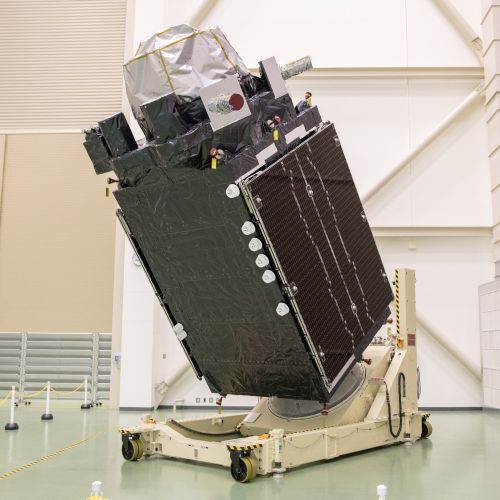
During operation, the antenna on the top will be pointed towards the earth, while the right and left sides with the solar wing arrays will face north and south
The H2A202 launch vehicle, with two solid rocket boosters (SRB-A) on both sides of the core frame, will be used for QZS-2 and QZS-4. The H2A204 launch vehicle, with improved launch performance and four SRB-A, will be used for QZS-3. The launch dates will be announced later.
Related information
-
 Dec.15,2021
Dec.15,20215th EU-Japan Public and Private GNSS Roundtable 2021
-
 Sep.17,2021
Sep.17,2021RPD Challenge 2020, a QZSS hackathon organized by the Cabinet Office, MGA, and GISTDA
-
 Mar.05,2020
Mar.05,2020[Report] Deliberations on QZSS at the 7th Session of the IMO's NCSR
-
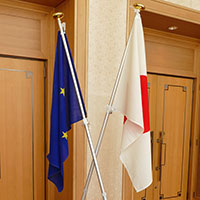 Apr.15,2019
Apr.15,20194th EU-Japan Public and Private GNSS Roundtable Meeting by the Cabinet Office and the European Commission
-
 May.04,2017
May.04,2017EU-Japan GNSS Mission (Day 2)
-
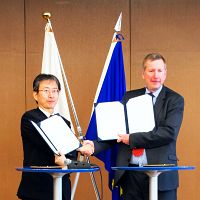 May.03,2017
May.03,2017Signing of a Cooperation Arrangement on Satellite Positioning Application
-
 May.02,2017
May.02,2017EU-Japan GNSS Mission (Day 1)
-

Information about events related to QZSS
-
 Sep.12,2017
Sep.12,2017Mitsubishi Heavy Industries Exhibited the first and second stages of QZS-4 Launch Vehicle
-
 Aug.18,2017
Aug.18,2017Exhibition of the QZS-4
-
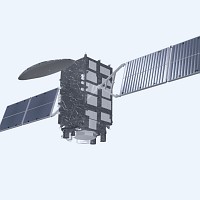 Aug.17,2017
Aug.17,2017Live Broadcast of the QZS-3 Launch
-
 Jul.07,2017
Jul.07,2017Mitsubishi Heavy Industries Exhibits the QZS-3 Launch Vehicle
-
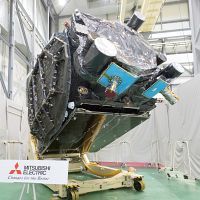 Jun.16,2017
Jun.16,2017Exhibition of the QZS-3
-
 Jun.01,2017
Jun.01,2017Successful Launch of QZS-2
-
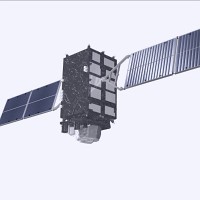 May.30,2017
May.30,2017Live Broadcast of the QZS-2 Launch
-
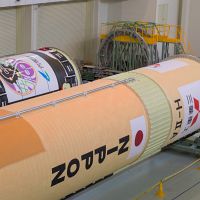 Apr.25,2017
Apr.25,2017Mitsubishi Heavy Industries Exhibits the QZS-2 Launch Vehicle Core Frame


